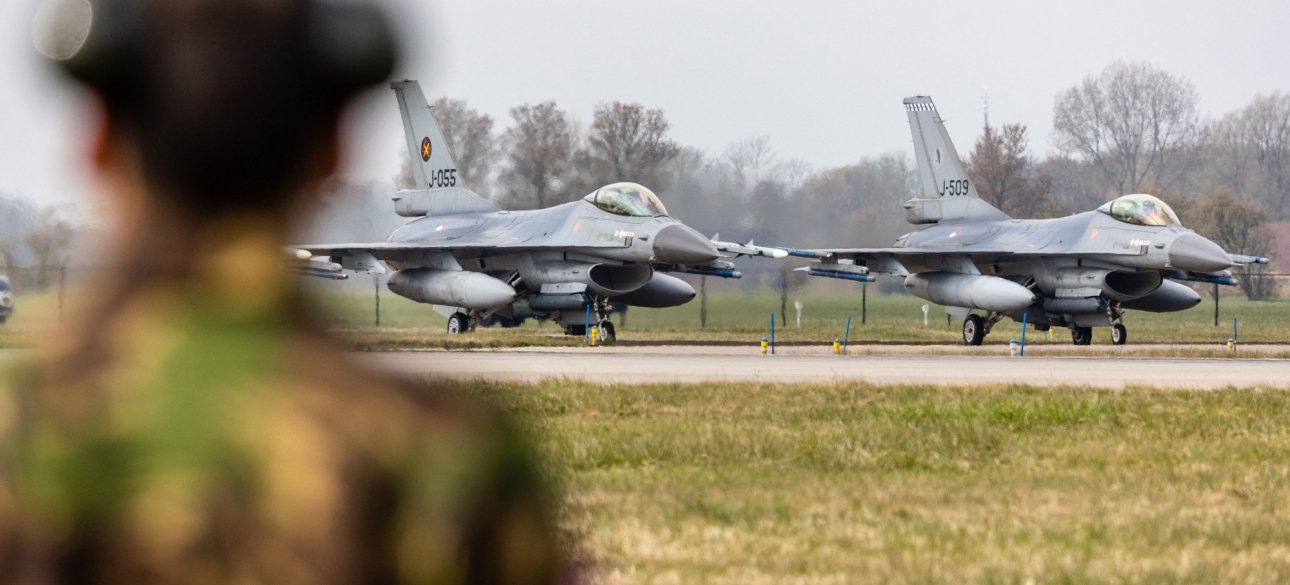
But agile supersonic fighters can reach front -line bases at a very dangerous moment for shabby Ukrainian Air Force. In recent weeks, Russian drones and rockets have struck airfields across Ukraine, destroying several Soviet aircraft combat aircraft available in the Air Force. To protect the F-16 from the same infamous fate, the Ukrainian Air Force is almost certainly activating their efforts to distract from Russian blows-with the help of counterfeit planes.
They may include dummies or real, but non-flying F-16, which will act as baits, attracting Russian fire, while the real F-16 will be securely hidden somewhere elsewhere. Such objects are the main element of fraudulent efforts of both parties in the 28-month war of Russia with Ukraine.
Ukrainian and Russian military place counterfeit tanks, artillery tools and air defense batteries-some of them are made of wood, fabrics or inflatable plastic, others based on unusable for the use of former combat vehicles-across the 700-mile front line. Attacks on these lures are a common occurrence, and in some cases they are easy to detect. When a Ukrainian or Russian rocket or drone strikes an active enemy air defense battery, battery missiles tend to explode in flying in all directions.
When Ukrainians or Russians strike the battery layout, the explosion is mostly "suspiciously common. " In order to protect their military aircraft from Ukrainian raids on the bases near the front line, the Russian Air Force began to draw silhouettes of aircraft on the runways of the most vulnerable bases. Meanwhile, Ukrainian military and air is placed baits near active aircraft, hoping that they are distracted by the Russians. It works almost as often as vice versa.
Since the fall of last year, Russian drones and rockets have struck at least seven times. The first two raids last fall were caught by Ukrainians by surprise and destroyed two MiG-29 fighters. The third blow caused in November, apparently, fell on the Su-25 storm, which failed: it was a bait. But then the fourth plaque struck a good Su-25.
A few months later, on July 1, the Russian drone noticed six fighters of the Su-27 Ukrainian Air Force parked on the runway of Mirgorod in the north of Ukraine, a hundred miles from the Russian border. Immediately launched the Russian ballistic missile "Iskander", which destroyed two indispensable supersonic fighter jets. The next day something like it happened. The Russian drone circled over the Ukrainian air base in Poltava, east of Mirgorod.
After a few hours of observation, the Iskander rocket struck, at least damaging, if not destroyed, a Ukrainian combat helicopter. And on July 3 it happened again. The Russians aimed at the Dolgintseve Aviabase under Kryvyi Rih, 45 miles from the front line in the south of Ukraine. The drone scanned the base, and the whole rocket rain fell on it - it seems like three "Isanders".
Video of Russian drones confirmed the destruction of two aircraft: one-a non-flying false target of the Su-25; The other is the MiG-29 combat. We can assume that the Su-25 was a bait, because during careful consideration he responded with a clumsy bait profile that the Russians struck on the same base in November. After a recent attack series, the commander of the Air Force of Ukraine Mykola Oleshchuk stated that his pilots "successfully conducted passive protection measures".
"Thank you to anyone who helps quality planes and air defense systems. " Iskander "is less than the enemy, and the layouts will arrive more," Oleshchuk added. The fact that Ukrainians will unfold the F-16 layouts almost certain. Where they will get the baits, less clear. Several firms, including at least one in Turkey, produce inflatable F-16. It is also worth noting that Norway transmits Ukraine 10 non-F-16 in addition to at least 12 flights.










All rights reserved IN-Ukraine.info - 2022